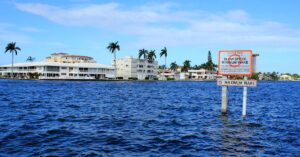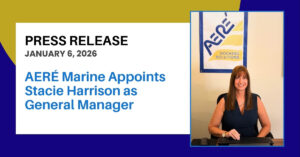With all of the technological advances in the marine industry, the navigational charts that are most commonly used while out on the water have become electronic. Almost every boat owner and captain relies on a navigational aid with a digital readout to help guide them. While these charts are very common, it is also very important that all boat owners know how to read navigational charts in order to keep themselves, and their boat, safe.
What Is A Navigational Chart?
Nautical charts contain many layers of important information. They are a critical tool for safety and awareness while out on the water. While it’s true that paper charts are not very common today, knowing how to read a navigational chart is the key to staying safe while out on the water. With paper charts, there is no fear of any technical failures or offline data unavailability, and understanding all of the information is great knowledge to have, should any issues arise.
Every navigational chart contains certain basic elements. A general familiarity with these common features will lay the foundation for understanding any chart. Here are some of the general elements of any navigational chart every boat owner should know that will help you gain a greater understanding of the conditions around you:
- Latitude and longitude – The lines on any navigational charts indicate the lines of latitude and longitude. This is the general marker for direction and overall layout. By first being aware of your location, it is possible to plan and keep track of your course.
- Compass rose – All charts have a compass rose, which shows both true north (outer circle) and magnetic north (inner circle). The variation between the two is shown in the center of the rose. Knowing this variation allows you to measure your boat’s direction with a compass (either handheld or binnacle) and plot your course accurately.
- MLLW – The mean lower low water (MLLW) level is the average height of the lowest tide recorded at a tide station. This information is useful in avoiding any shallow water during low tide.
- Hazard warning symbols – Things that could be dangerous, such as rocks, which are marked with an X, might be hiding underwater during a high tide, so it’s important to know where they are. Even if a particular object does not pose a safety hazard, it could cause a disruption in water flow that could affect your course.
- Chart scale – The numbers indicated on a nautical chart indicate water depth. You can measure both the distance and depth of the water by familiarizing yourself with the scale of the chart. Knowing the unit of measurement that is being used to determine the water depth, and the conversions are vital. For example, if the chart is measured in fathoms, multiply fathoms by 6 to get the depth in feet, or if measured in meters, multiply meter measurements by 3 to convert.
- Channel markers – Follow red and green buoys for navigational guides. These buoys mark water channels. The colored circles you see on a chart correspond to buoys you will see floating along the channels as you travel. Travel markers are numbered, making tracking your route easy.
A few other key elements that are shown on navigational charts are small anchors to indicate anchor points, arrows showing the direction of the currents and tides, and different colors to indicate both water depth and any sand bars in the area.
By understanding the basic elements of a navigation chart and what they mean, any boat owner can have peace of mind knowing that they have the tools and information needed to keep both themselves, and their vessels, safe. While electronic navigational aids take much of the guesswork out of reading navigation charts, it is an important and necessary skill to know how to read and understand traditional ones to ensure safe navigation, and an enjoyable time out on the water.









